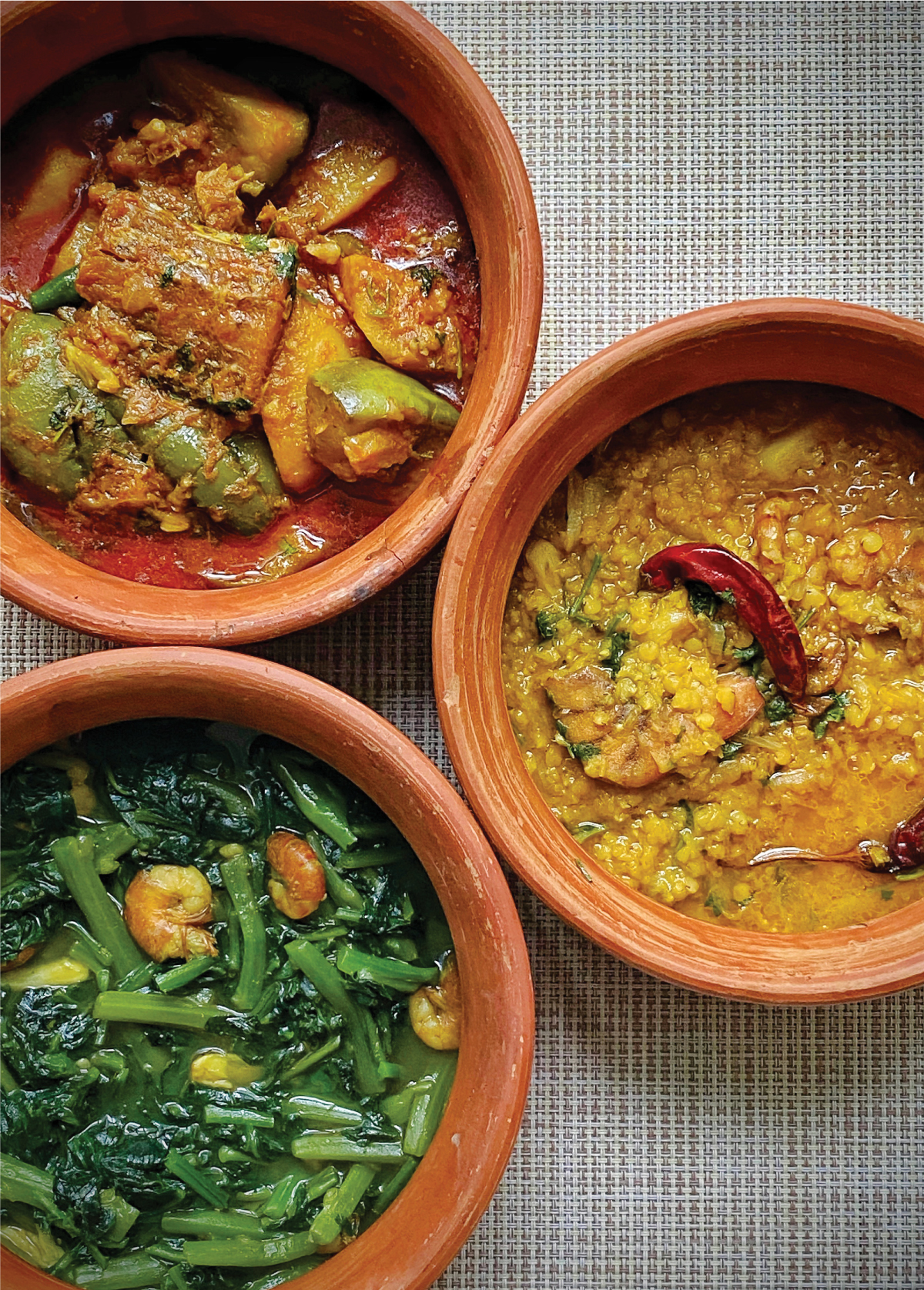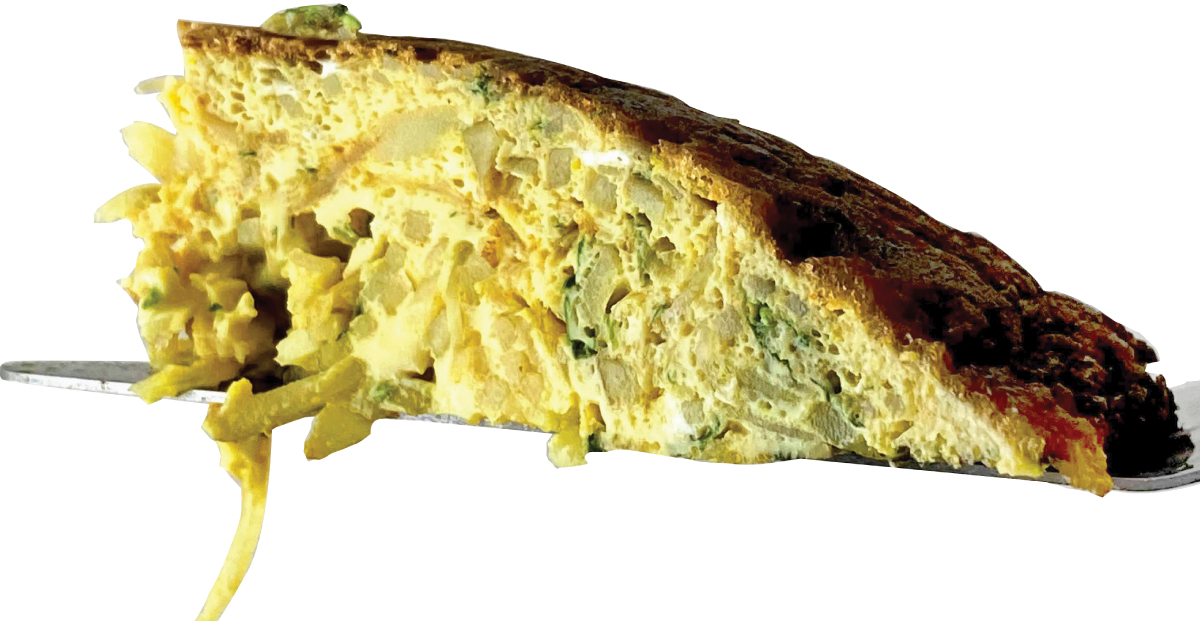Abeer Rajbeen is the author of the blog abeer.learns.to.cook (Instagram and FaceBook). The blog captures Abeer’s endeavours to learn new techniques and recipes from around the world. People often ask, why ‘learns’? According to her, it’s because it is the thrill of mastering a new flavour, tool, or recipe that urges her to keep going (with a downside of often not being able to recreate her own inventions sometimes!).
It was a humid hot day when suddendenly, out of nowhere, it started to pour like there is no tomorrow. Like every other Bangladeshi across the country and the entire world, I too have a deep, romantic relationship with rain.
I know that by now, the social media newsfeed must be full of photos and mentions of khichuri. And here I am, contemplating too on what to prepare for lunch…

It’s so curious how cooking khichuri on rainy days has become a ritual in our culture. There is an unwritten law which commands that khichuri be consumed (preferably with ilish or beef), as soon as the drop of first rain touches the ground. I do wonder sometimes – where did this practice come from?
Growing up, rainy days in my household hardly ever featured khichuri. A part of celebrations or special meals? For sure, but not the star meal for a regular downpour.
I am a Chatgaiya from the bottom of my heart and soul. I am pretty sure that the correct expression is khash Chatgaiya. LOL.
Rainy days had a whole other ritual in our house. To begin with, if it had been raining for a few days straight – the deep frown and angst etched on my Mom’s face would deepen because, “kapor shukachhe na” or “ish, uthan ta abar picchil hoye gelo” or “bashai bajar nai, kemne jabe bajare?” Cooking a fancy meal would be the last thing on her mind on those days. Rain meant no fresh produce for that day, because no one will be going to market. So, our table usually featured items which were unique to those days, easily storable and employed no fuss cooking techniques – the concepts of which are ancient and the flavors, earthy.
Our pantry was always equipped to handle days like these; it was always stocked with some remarkable ingredients like felom dal* and shutki (like duh! khash Chatgaiya, remember?)
We used to have a vegetable patch at home back in the days, where my Grandma used to grow shim, lau, alu, and other seasonal vegetables like kakrol, etc. So on days like this one, when the sky grew dark and the clouds began to roll in, she would step out to the patch. I have a vivid image of her in a soft, blue and white saree, carefully picking out the leaves of different edible plants – lau pata, shim pata, and shaak – all of which would turn into a paanch-mishali goodness.
Sometimes she would even pick up some rosella – chukai. Together with a bit of daal, all these fresh, leafy greens, along with some rosella, will be thrown together to create a ‘jhol, jhol’ shak. My mom is an expert in cooking vegetables while keeping them green. So this jhol shak should be dark green in color, with the rosella giving it a slight tang.
If I had to name one preparation that was quintessential to our menu during rainy days, it has to be felom dal er khaissha** with chingri shutki. I don’t know how many of you have tried this, but chingri shutki and dal is a match made in heaven. No love story can ever measure up to THIS steamy affair!
This duo never failed to put a smile on our faces when we were kids, and now when I cook dal and shutki in this urban apartment kitchen in the year 2021 in the middle of Dhaka, my husband and my daughter will also inevitably come sniffing to the kitchen, asking “shutki ranna korteso?” I cannot help but feel humbled by this age-old flavor and aroma that has made so many families happy for so many decades.
There is little to no fuss in cooking khaissha. You literally throw everything into the pot and let it all cook in a lot of water. The stew lazily dances and simmers in the pot, the flavors combine and then emerges – CAPTAIN KHAISSHA! *tears of joy*
Oh God! Look at me, writing an ode to khaissha! Ah, if only I had any talent in crafting poetry!
A Chatgaiya household is not Chatgaiya enough if it doesn’t have futa baiyun aka round green eggplants in its pantry. So, that will also have to come out and will be paired with shutki (yes, shutki again) which are not very fleshy, like faissha or chhuri shutki. Needless to say, it will HAVE to have thick wedges of alu in it too.
Remember, no matter what ratio the potatoes are given in, it will ALWAYS be the first ingredient to be finished in the dish.

There were no fancy fish items on the table on a rainy day for us. Mom would take all the leftover fish out of the fridge, put all the different types of fish in one pan, and cook it on a low heat for hours. We would then eat this mixed bhuna (not bhaja) machh, charred and crispy on one side. The jhol will also become ‘pora pora’.
After everyone had eaten all the fish, and there was none left in the pan, we would then put a little bit of rice in the korai and wipe all the residual moshla clean off the pan! And that was the last thing we would eat to end the meal. It was the SHOWSTOPPER. I am sure you guys also have similar childhood memories of korai muchhe khawa.
Last, but not least, if there is one grand item left to be made, it has to be dim khola – a fluffy omelette that will sit at the center of your table like a crown jewel. This dish is where Spanish style eggs meet Chatgaiya spices. The eggs are mixed with finely chopped potatoes, onions, coriander leaves, a little bit of turmeric and chilli powder. Then it is slowly cooked in mustard oil till it puffs up like a cake and it has a brown crust at the bottom. Brilliant piece of culinary art – I tip my hat to whoever invented it.
The daal-shutkir khaissha, the begoon shutki, the shaak, the dim and the bhuna machh served with the simple yet gorgeous Atop chaal er ahada bhaat. And Us – sisters, parents, grandparents, cousins, uncles and aunts, all gathered around our round lunch table.
Celebrating the flavors handed down to us for ages, devouring food as hearty as the rain is to the ground.
* Felom dal is a grain indigenous to the hill tracts; a rough, broken type of lentil. ** Khaissha is a common name for stews made with shutki and either a lentils, seeds or beans

